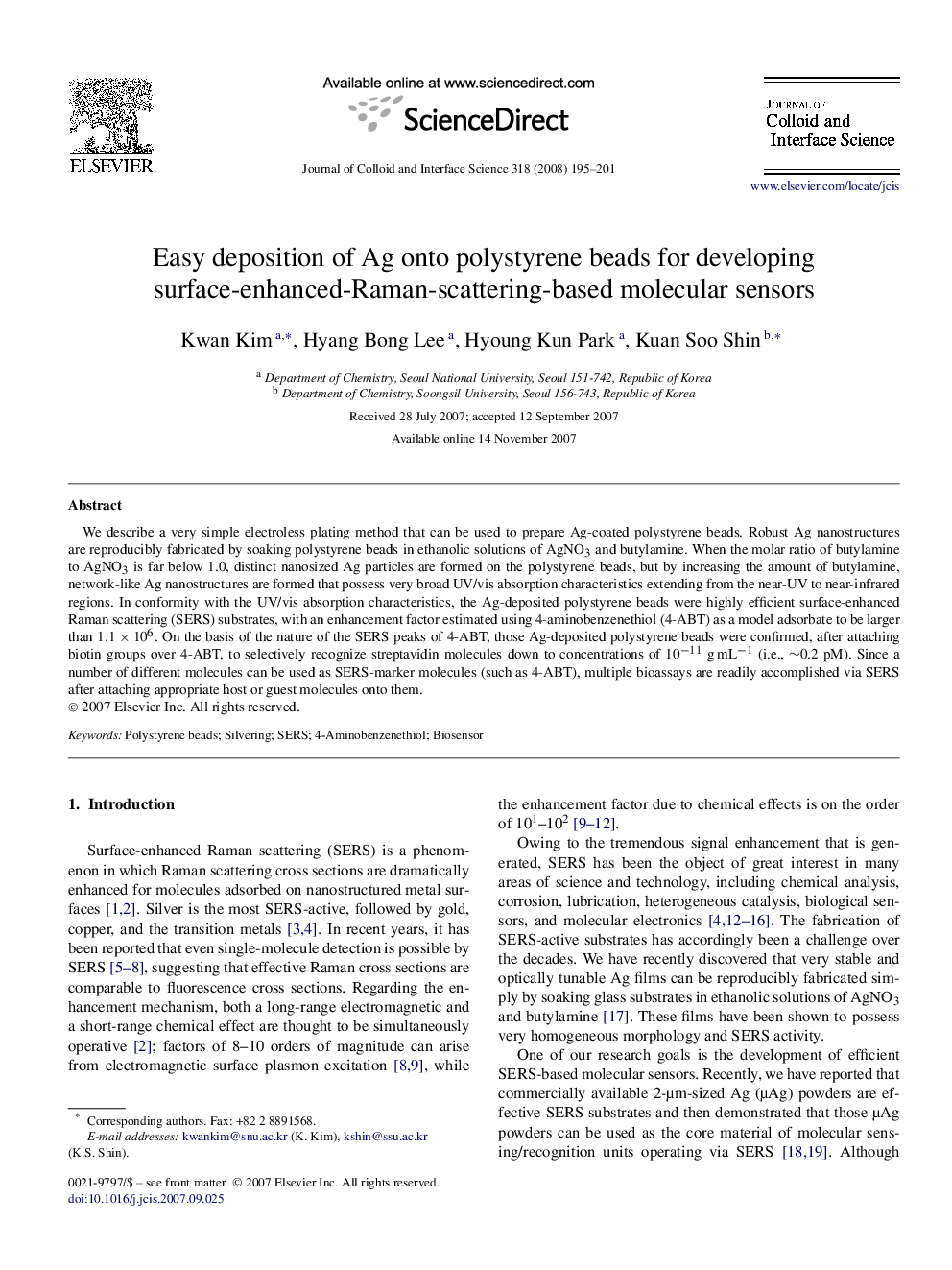| Article ID | Journal | Published Year | Pages | File Type |
|---|---|---|---|---|
| 611361 | Journal of Colloid and Interface Science | 2008 | 7 Pages |
We describe a very simple electroless plating method that can be used to prepare Ag-coated polystyrene beads. Robust Ag nanostructures are reproducibly fabricated by soaking polystyrene beads in ethanolic solutions of AgNO3 and butylamine. When the molar ratio of butylamine to AgNO3 is far below 1.0, distinct nanosized Ag particles are formed on the polystyrene beads, but by increasing the amount of butylamine, network-like Ag nanostructures are formed that possess very broad UV/vis absorption characteristics extending from the near-UV to near-infrared regions. In conformity with the UV/vis absorption characteristics, the Ag-deposited polystyrene beads were highly efficient surface-enhanced Raman scattering (SERS) substrates, with an enhancement factor estimated using 4-aminobenzenethiol (4-ABT) as a model adsorbate to be larger than 1.1×1061.1×106. On the basis of the nature of the SERS peaks of 4-ABT, those Ag-deposited polystyrene beads were confirmed, after attaching biotin groups over 4-ABT, to selectively recognize streptavidin molecules down to concentrations of 10−11 g mL−1 (i.e., ∼0.2 pM). Since a number of different molecules can be used as SERS-marker molecules (such as 4-ABT), multiple bioassays are readily accomplished via SERS after attaching appropriate host or guest molecules onto them.
Graphical abstractAg-coated polystyrene (PS) beads, easily prepared by electroless deposition method, are highly efficient SERS substrate usable as a core material of SERS-based molecular sensors; the last cartoon illustrates the interaction of biotinylated beads with other biotinylated substrates by the mediation of streptavidin molecules labeled as “X.”Figure optionsDownload full-size imageDownload as PowerPoint slide
